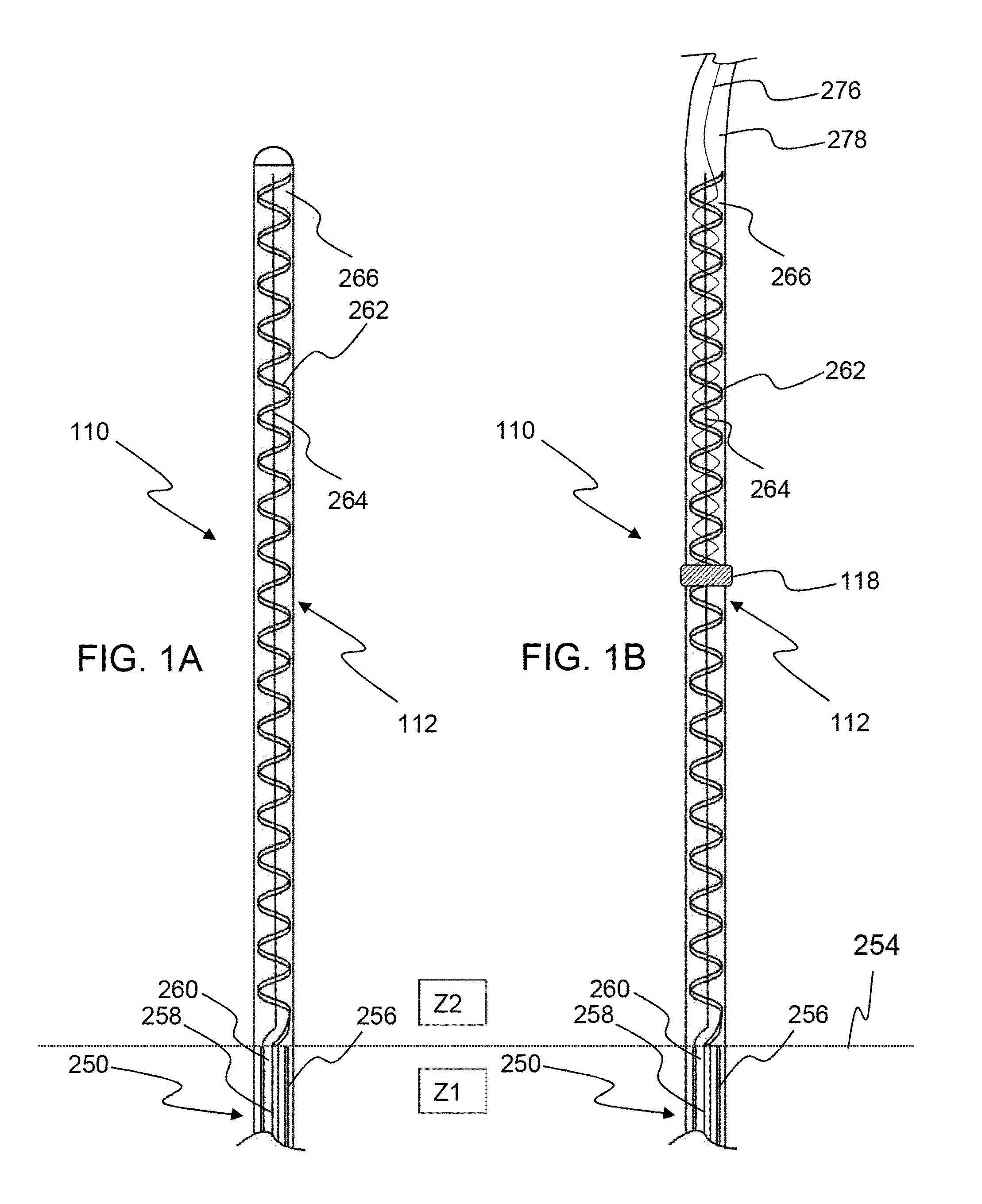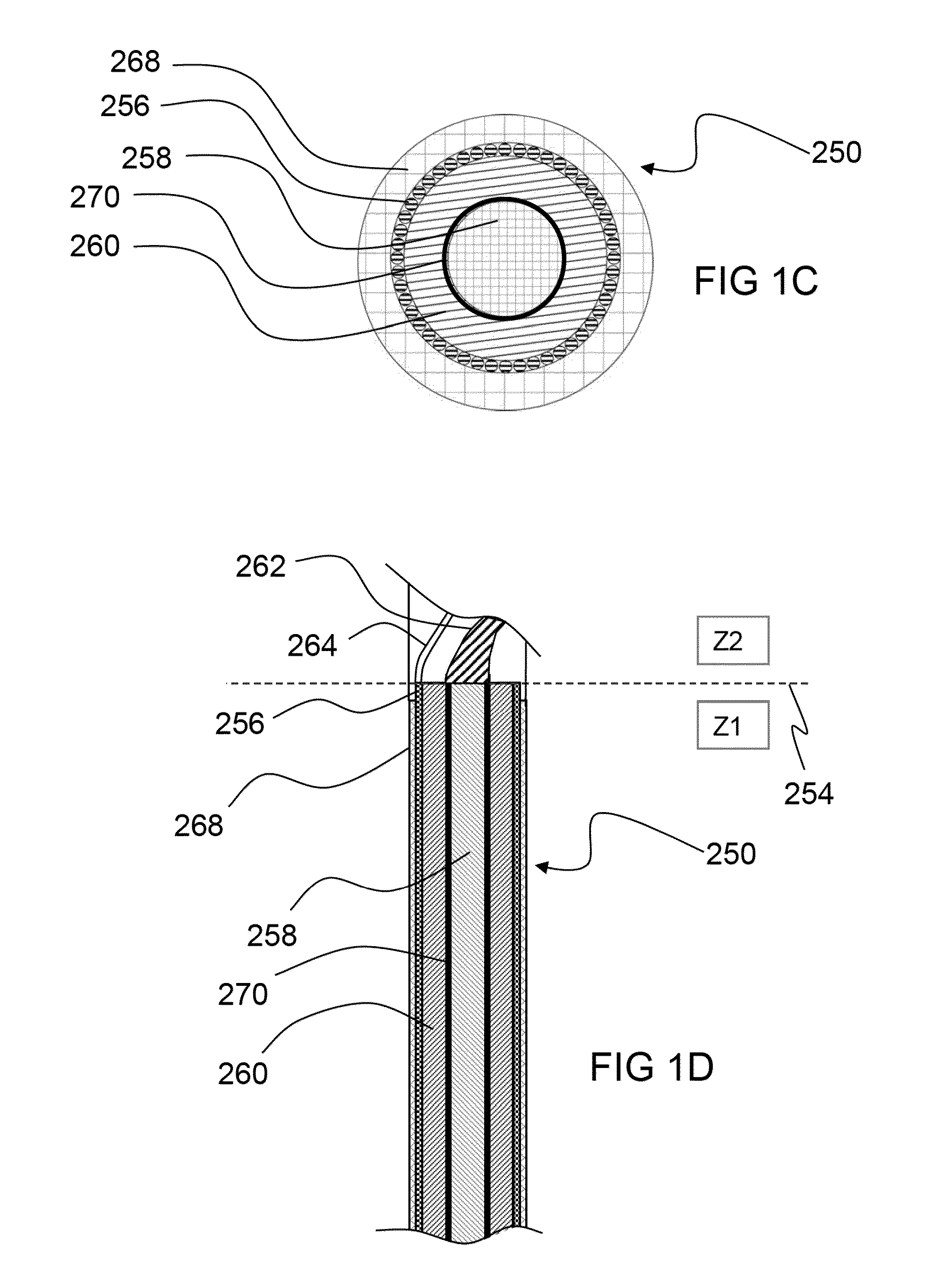Microwave treatment devices and methods
a treatment device and microwave technology, applied in the field of microwave antennas and delivery systems, can solve the problems of unsuitable clinical use of microwave antennas, unfavorable patient treatment, and unfavorable patient treatmen
- Summary
- Abstract
- Description
- Claims
- Application Information
AI Technical Summary
Benefits of technology
Problems solved by technology
Method used
Image
Examples
first embodiment
[0194]FIG. 4A illustrates a medical system 100 that allows for improved positioning of one or more medical components 110. As shown, the system 100 includes a first maneuverable or steerable arm 102 and second maneuverable or steerable arm 102 that together manipulate medical component 110 extending between the distal end of the two arms. As discussed in detail below, the system 100 can be equipped to position any number of medical components. In most cases, at least one medical component 110 extends between first arm 102 and second arm 102. In one embodiment, first maneuverable or steerable arm 102 can be non-movably coupled to the medical component 110. In such a case, the combination of the first permanently mounted steerable arm 102 and medical component 110 would itself become a first maneuverable or steerable medical device. Medical component 110 may comprise one or more working elements.
[0195]Examples of such working elements are disclosed elsewhere in this document. Medical ...
second embodiment
[0290]FIGS. 10E-10HA show various views of a medical system comprising a hollow tube through which an elongate looped medical component is slidably introduced. In FIG. 10E, introducer sheath 186 encloses a lumen through which an elongate functional tube 188 is introduced. Functional tube 188 is looped such that the one end of functional tube 188 passes through introducer sheath 186 and exits through the proximal end of introducer sheath 186. The other end of functional tube 188 terminates outside introducer sheath 186 and is located adjacent to the distal end of introducer sheath 186. The end of functional tube 188 passing through introducer sheath 186 may be advanced and / or retracted and / or torqued or twisted to position functional tube 188 as desired in the anatomy. The looped region of functional tube 188 distal to the distal end of introducer sheath 186 may be twisted or turned or otherwise distorted.
[0291]The size of the looped region of functional tube 188 distal to the distal...
third embodiment
[0294]FIGS. 10I-10LA show various views of a medical system comprising a hollow tube through which an elongate looped medical component is slidably introduced. In FIG. 10I, introducer sheath 186 encloses a lumen through which an elongate functional tube 188 is introduced. Functional tube 188 is looped such that the one end of functional tube 188 passes through introducer sheath 186 and exits through the proximal end of introducer sheath 186. The other end of functional tube 188 terminates outside introducer sheath 186 and is located distal to the distal end of introducer sheath 186. The end of functional tube 188 passing through introducer sheath 186 may be advanced and / or retracted and / or torqued or twisted to position functional tube 188 as desired in the anatomy.
[0295]The looped region of functional tube 188 distal to the distal end of introducer sheath 186 may be twisted or turned or otherwise distorted. The size of the looped region of functional tube 188 distal to the distal e...
PUM
 Login to View More
Login to View More Abstract
Description
Claims
Application Information
 Login to View More
Login to View More - R&D
- Intellectual Property
- Life Sciences
- Materials
- Tech Scout
- Unparalleled Data Quality
- Higher Quality Content
- 60% Fewer Hallucinations
Browse by: Latest US Patents, China's latest patents, Technical Efficacy Thesaurus, Application Domain, Technology Topic, Popular Technical Reports.
© 2025 PatSnap. All rights reserved.Legal|Privacy policy|Modern Slavery Act Transparency Statement|Sitemap|About US| Contact US: help@patsnap.com



